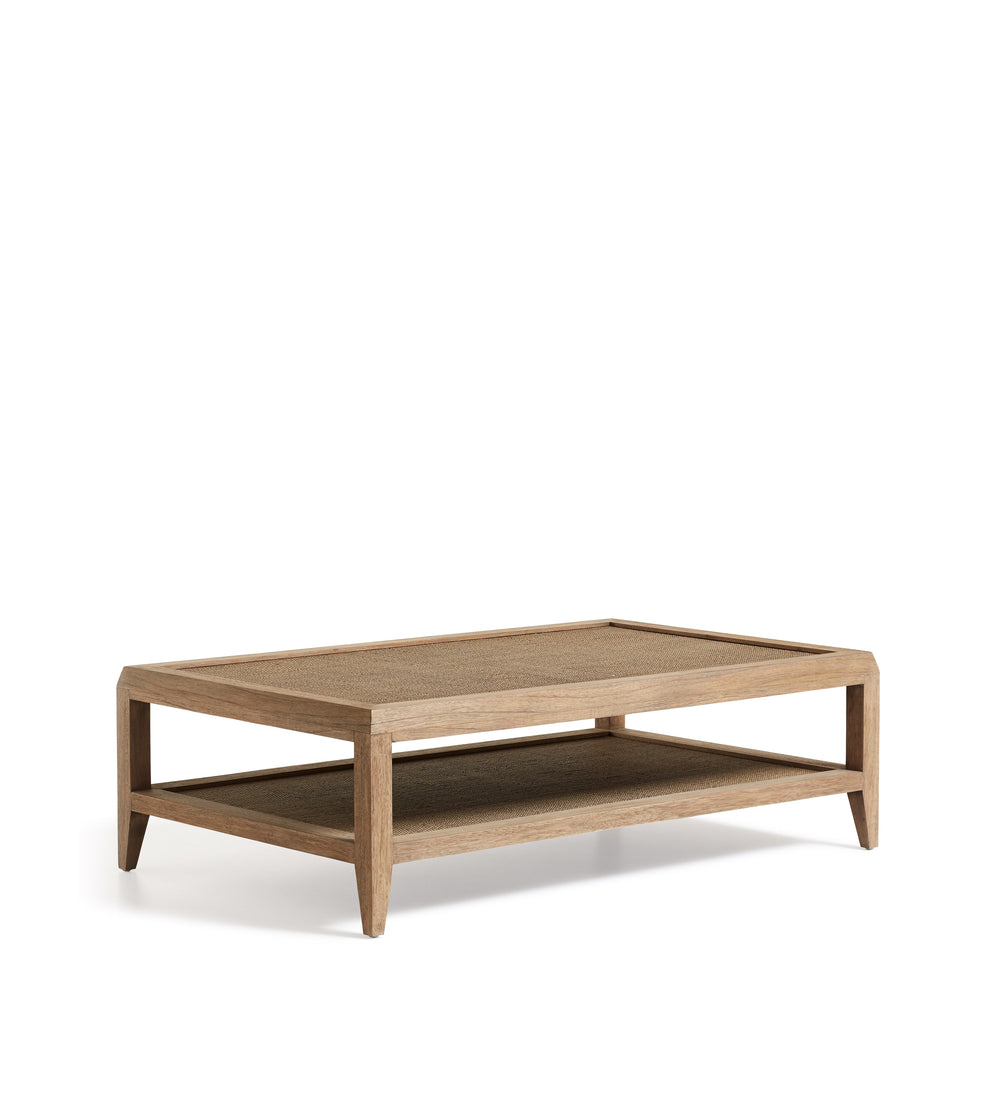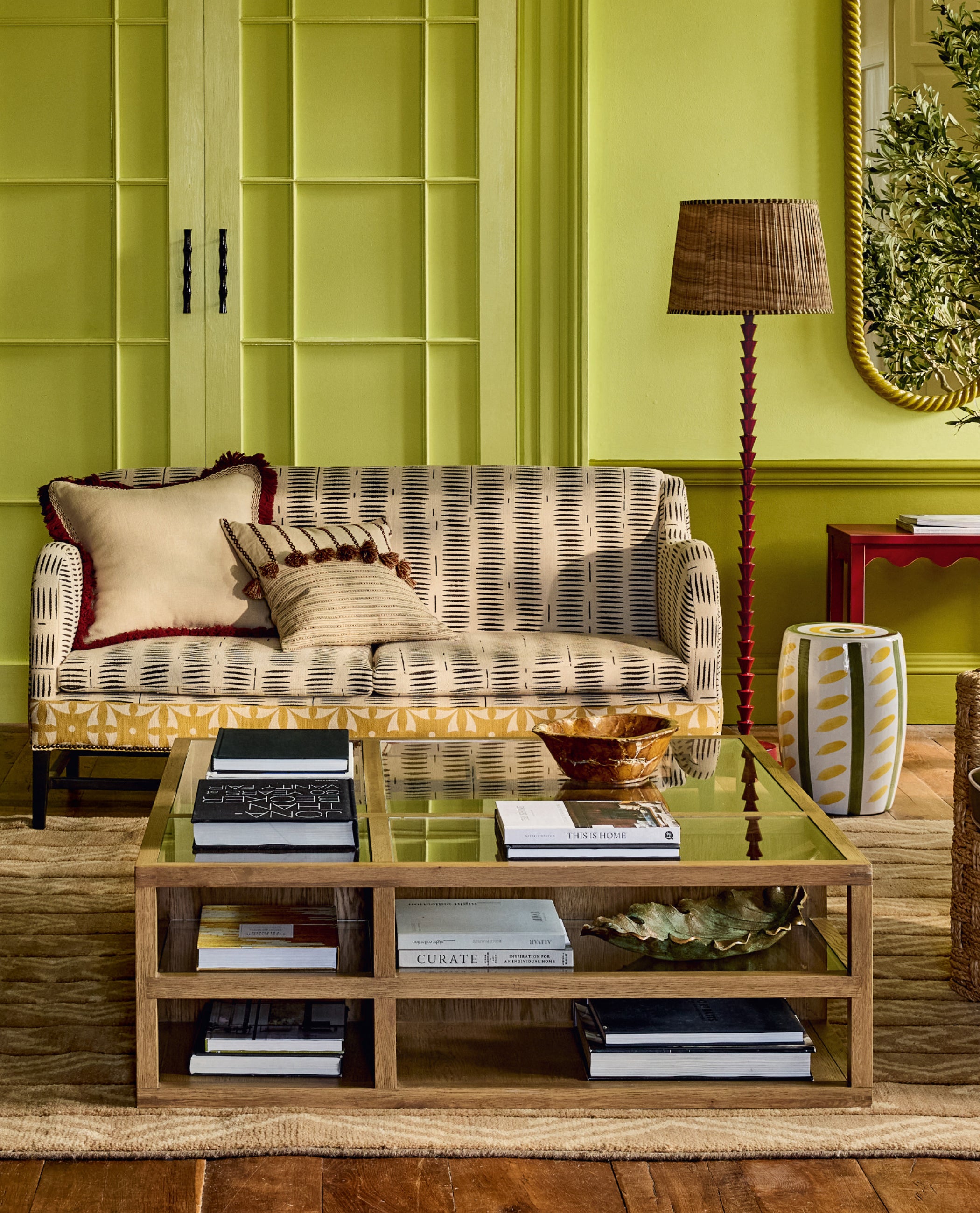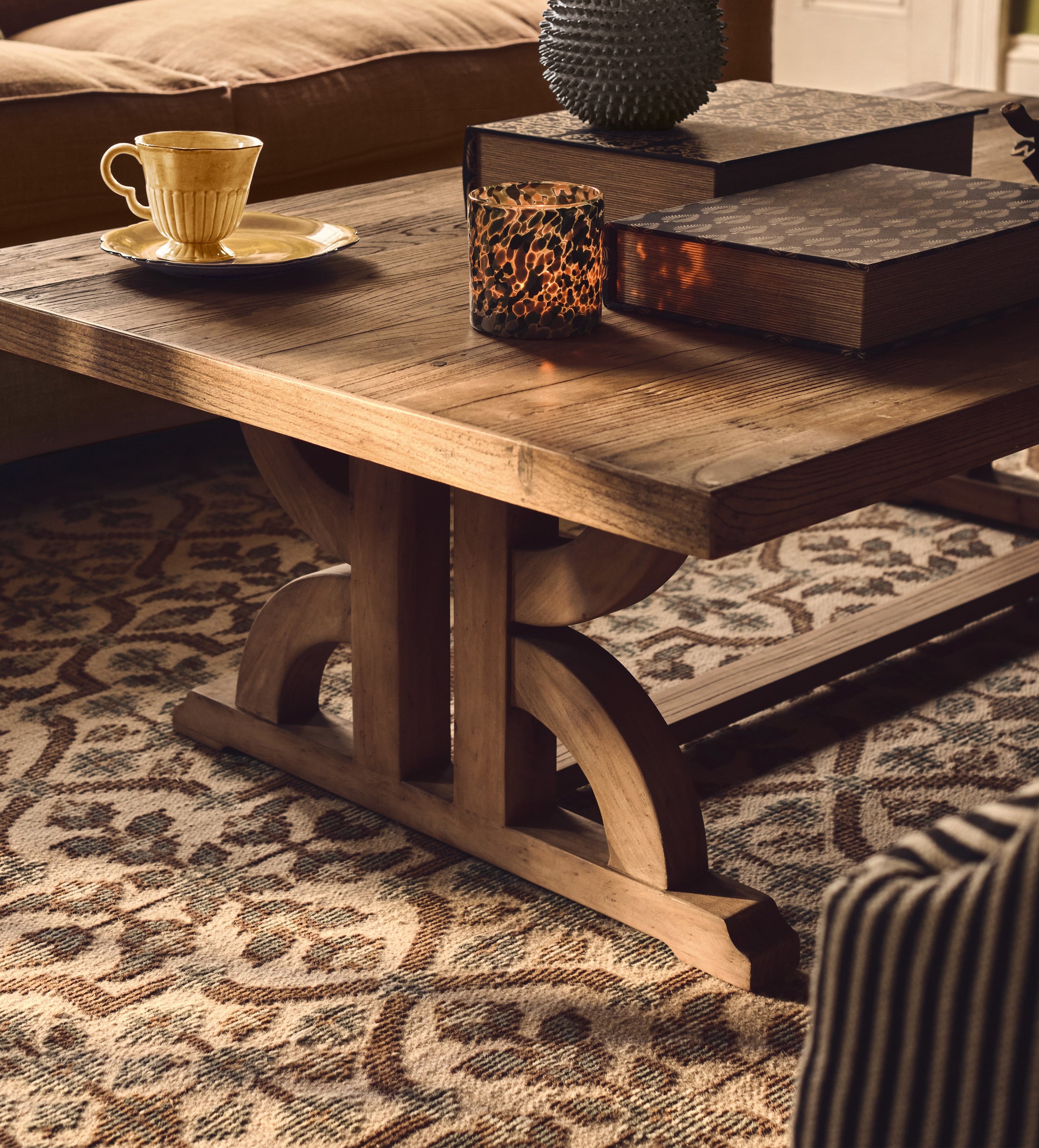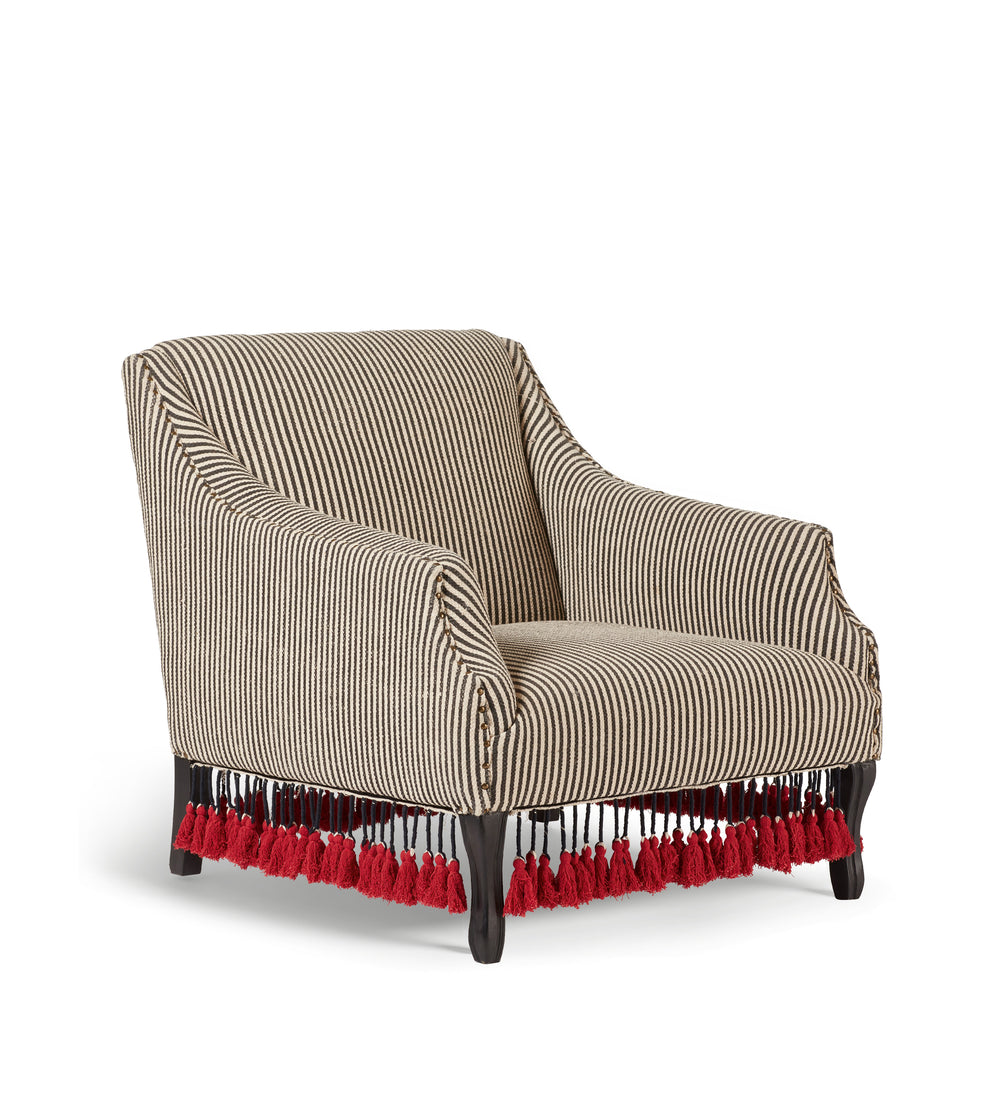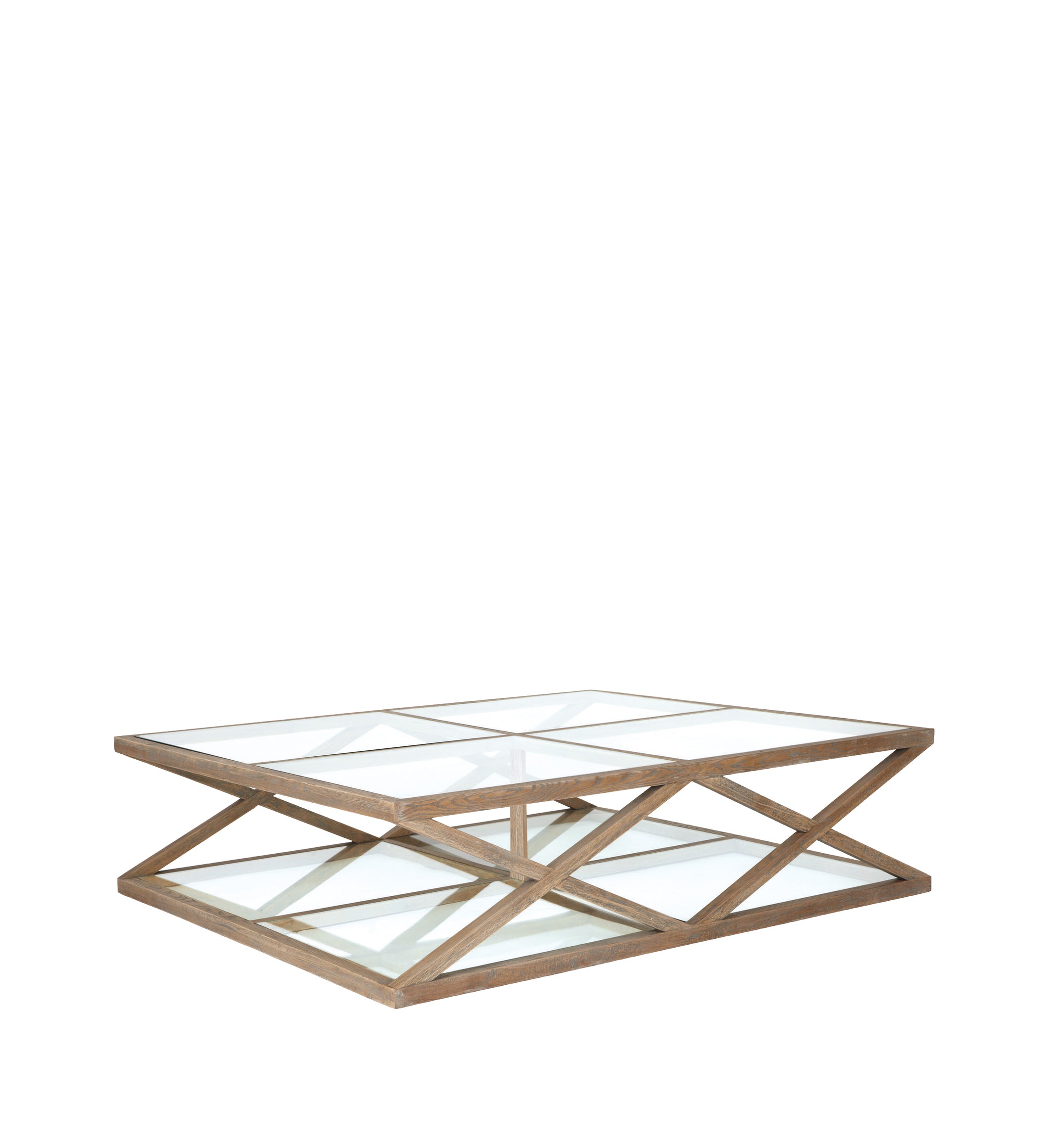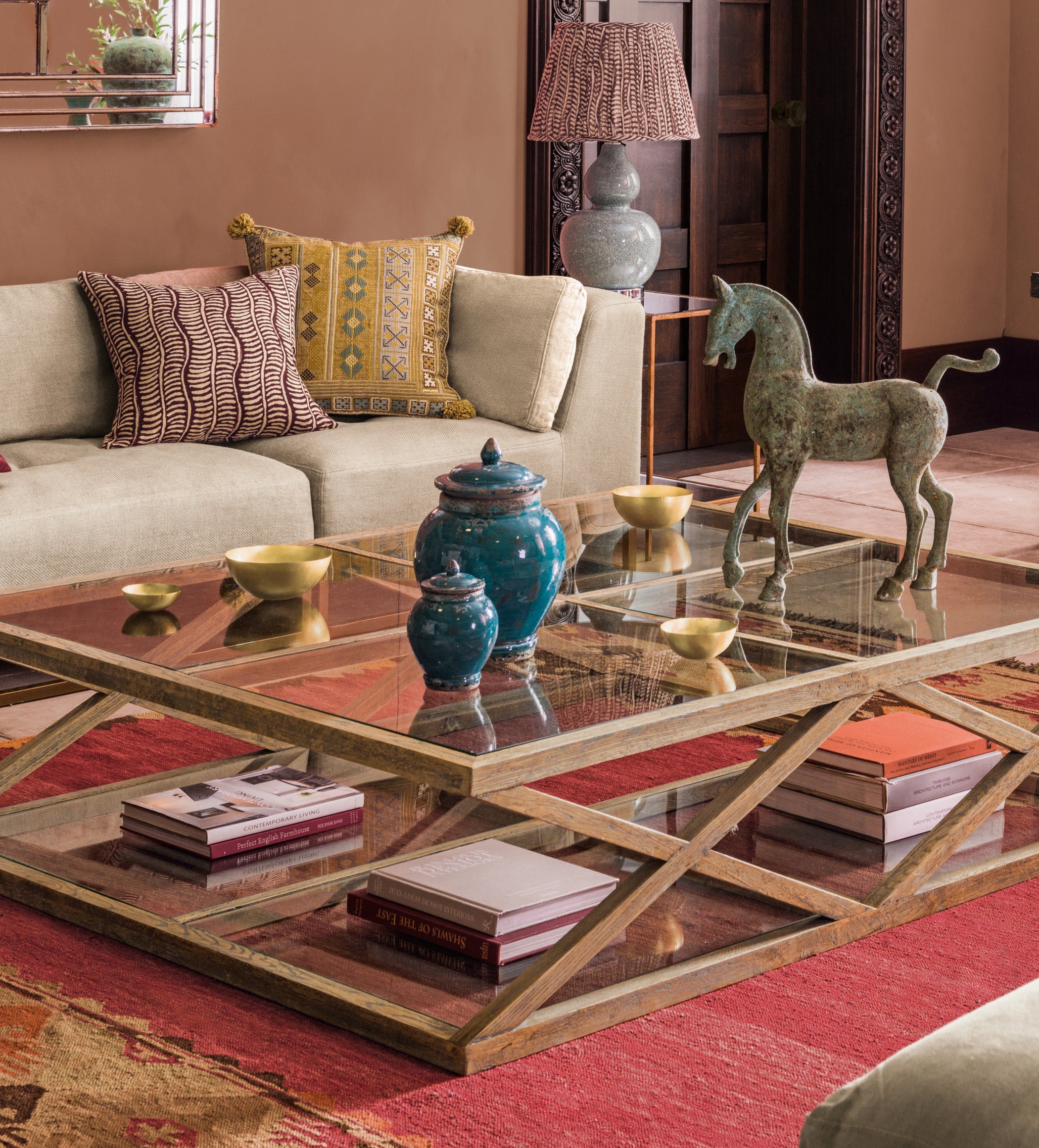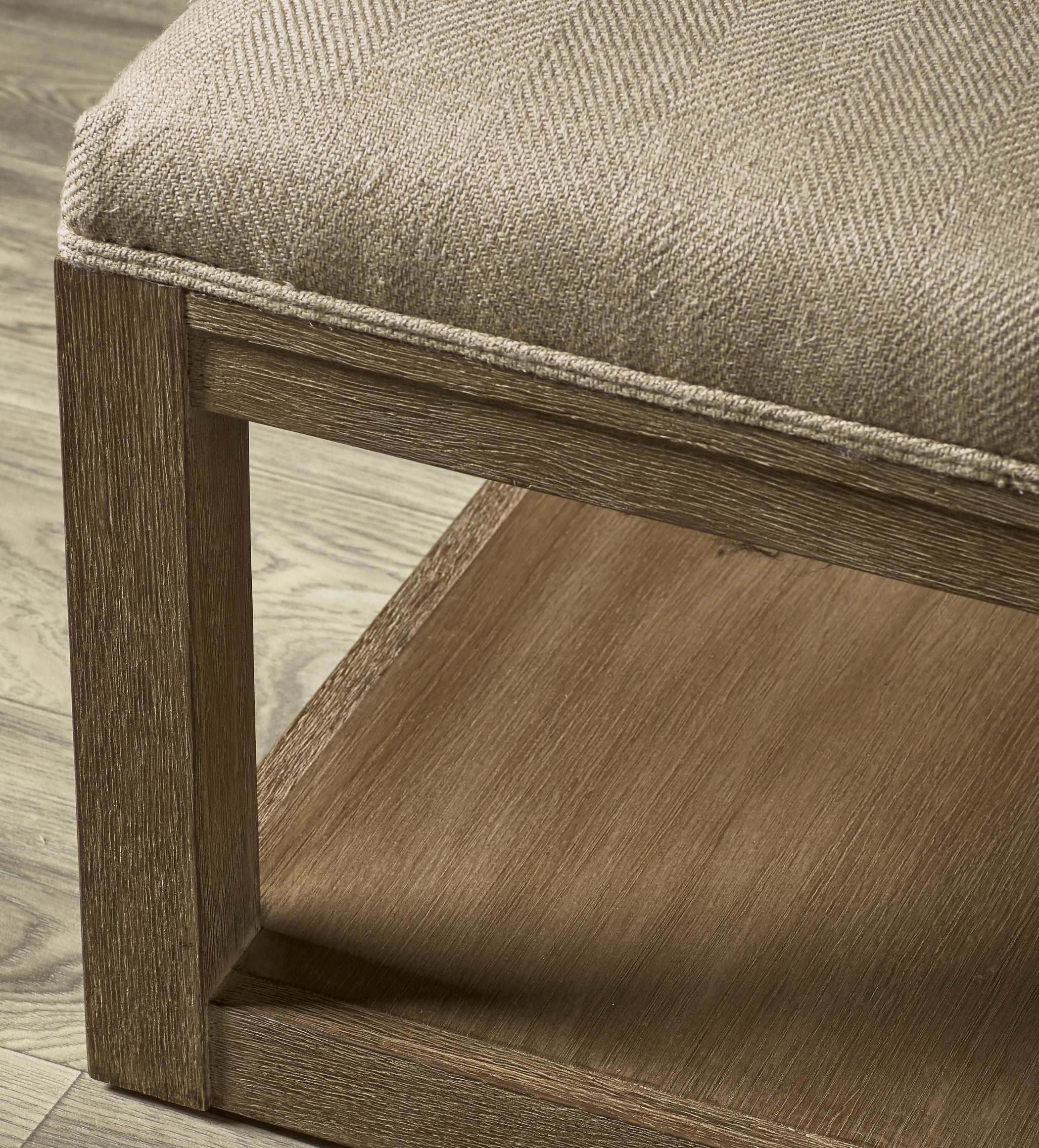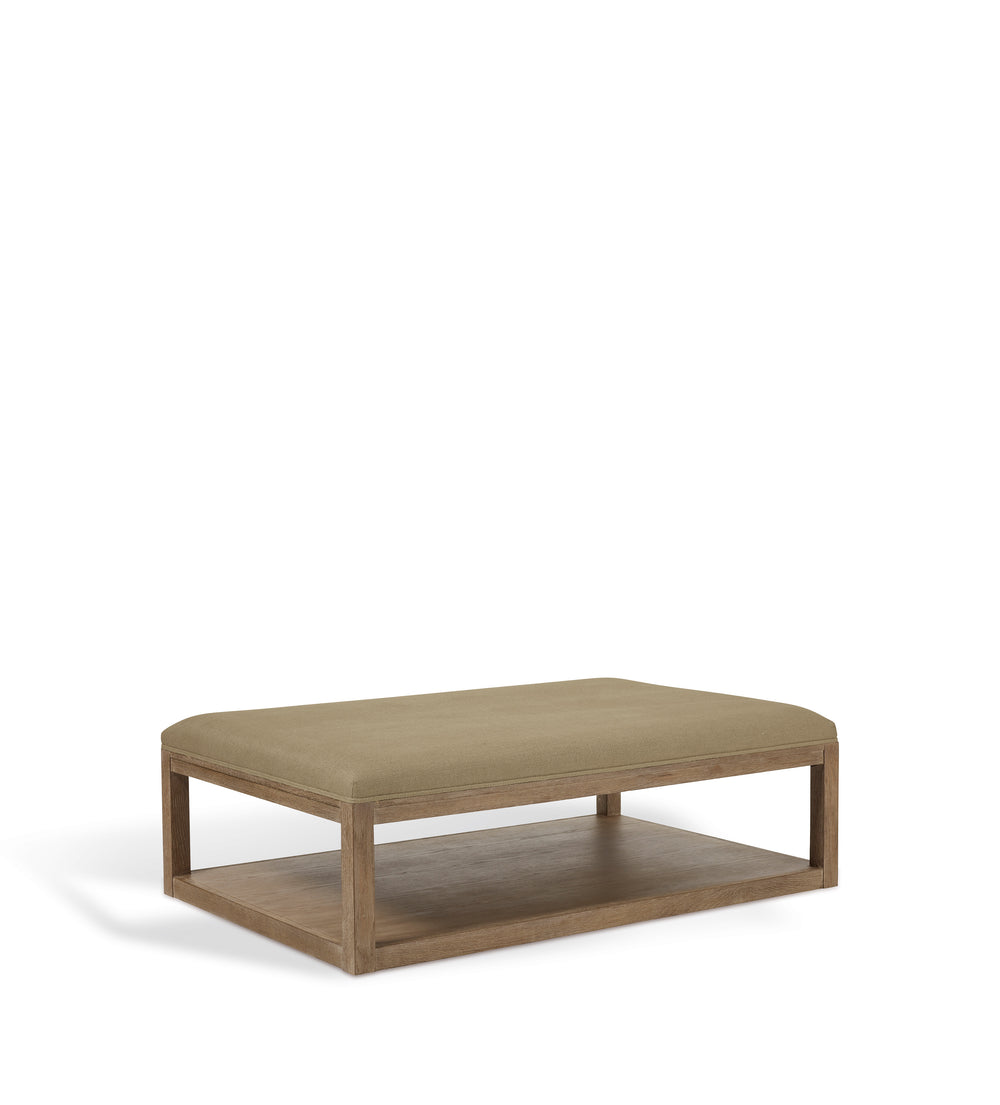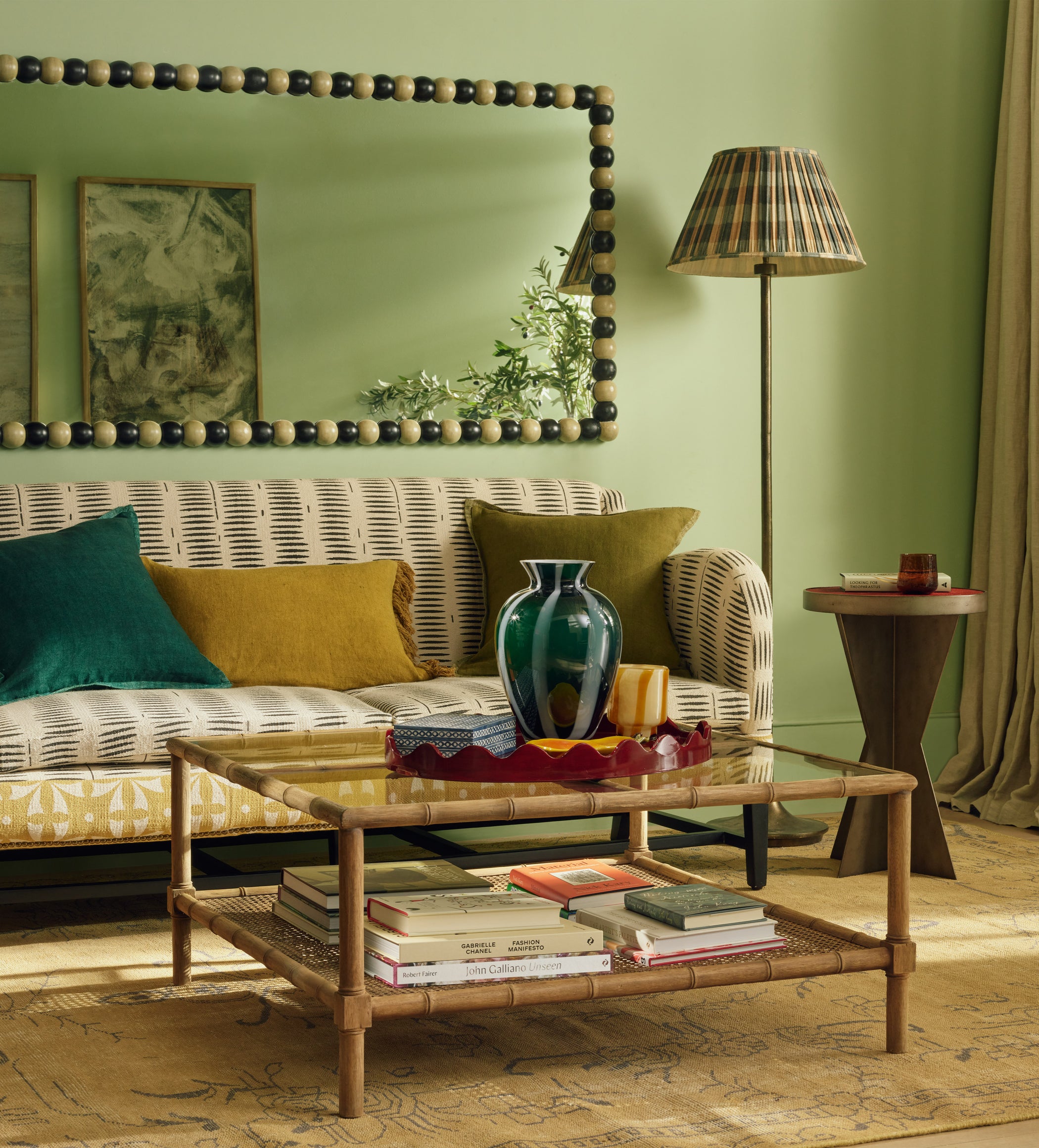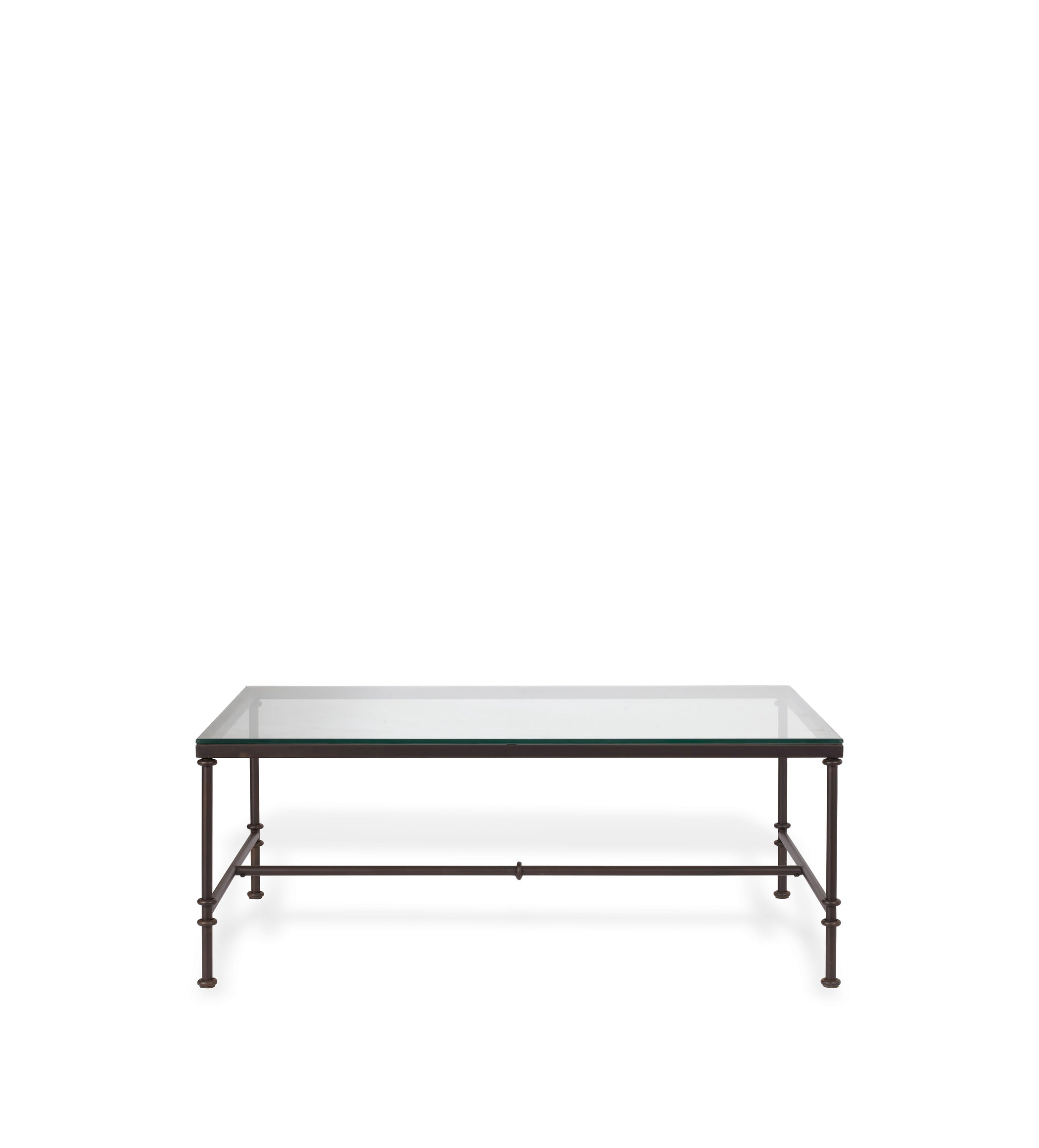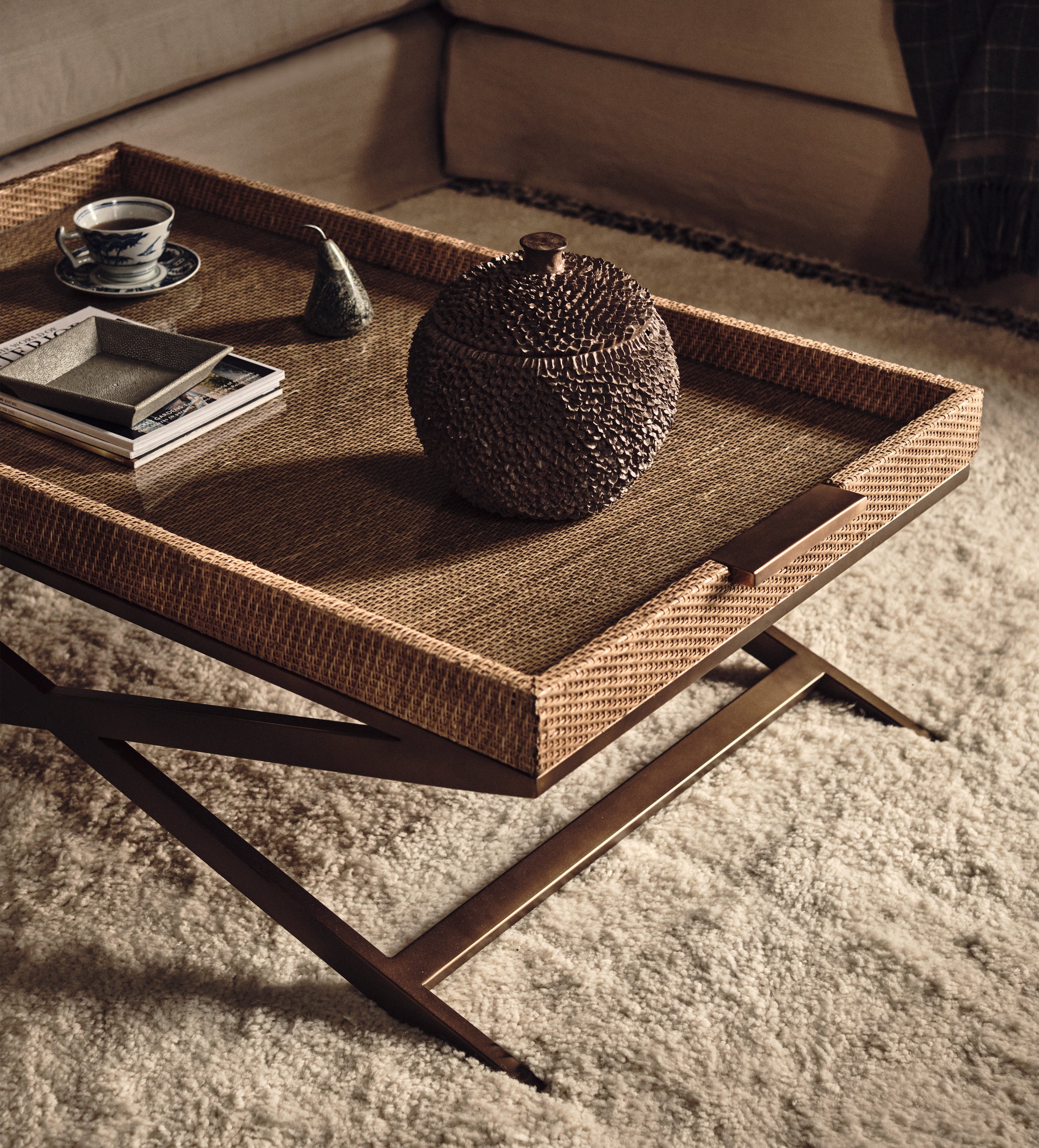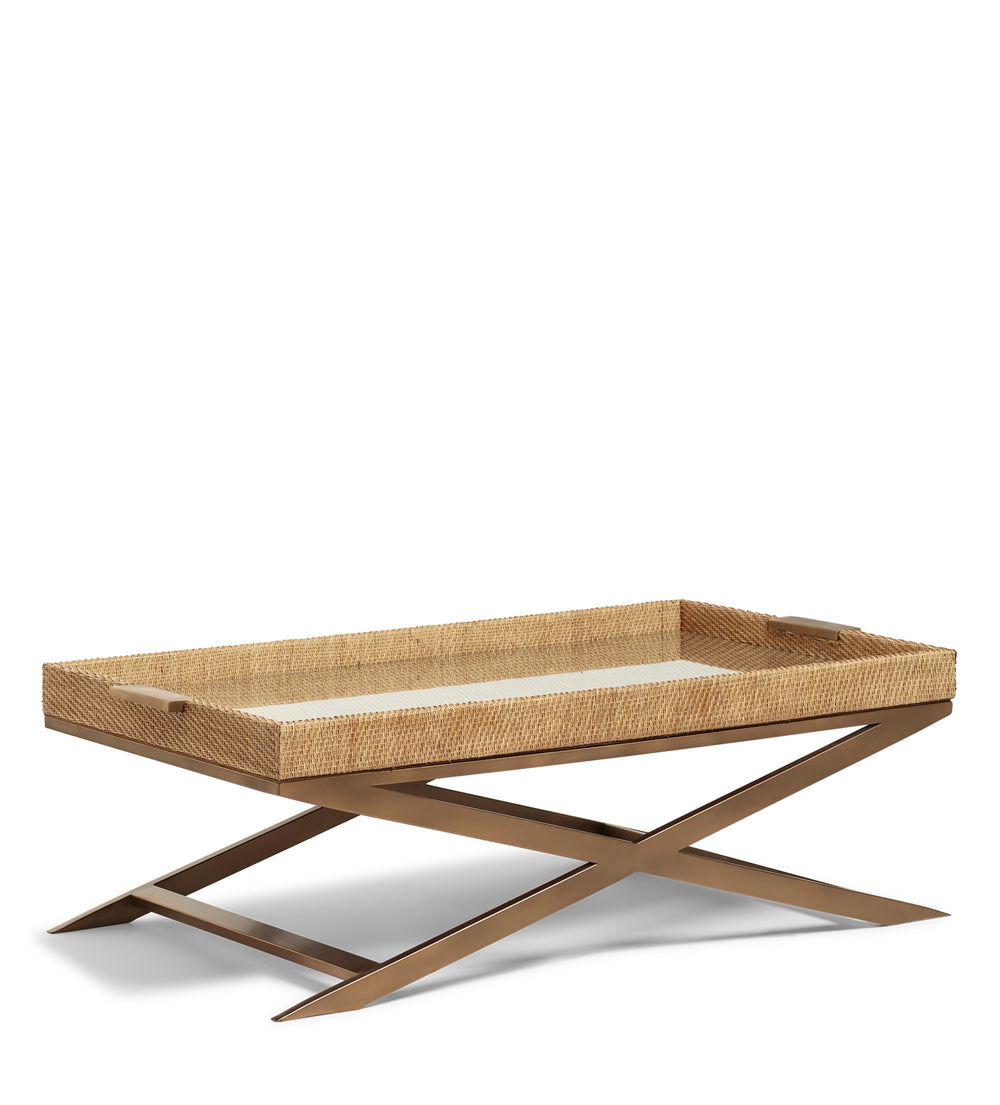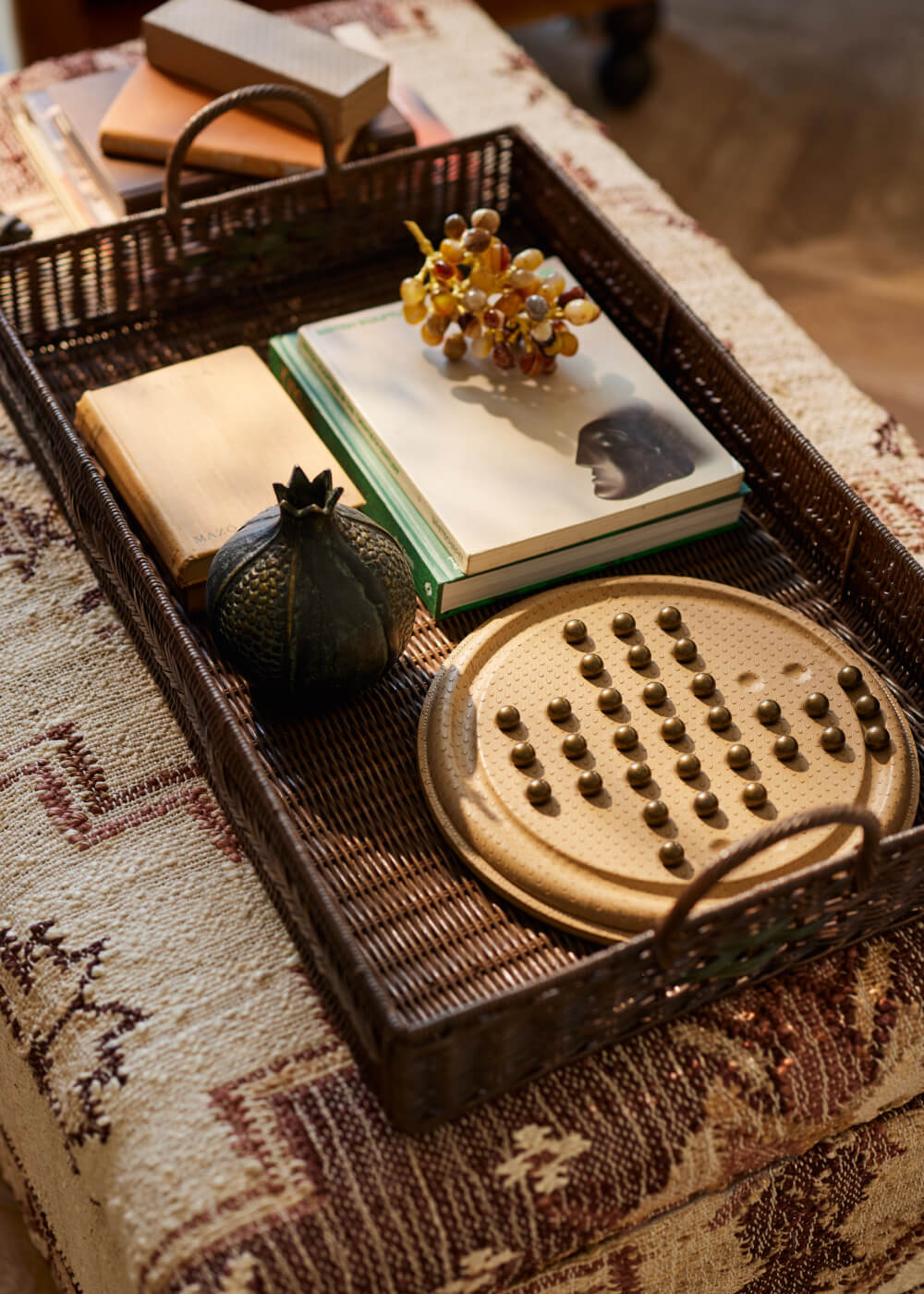Often the focal feature, a coffee table draws much of the attention in the sitting room. Casting this leading role comes not without its challenges, as those on the hunt for the perfect piece have a few things to consider. Firstly, how will it stand out on its own, while seamlessly complementing the rest of the room, and secondly – perhaps most importantly – how it will serve as a functional and practical piece. From size to style, we’ve collated our best advice in this handy coffee table buying guide, to help you on your way to choosing the right design for you.


Published 13 February 2025 | Last Modified 26 August 2025 | Ellen Millard
Our Coffee Table Buying Guide
“A coffee table can completely change the feel and functionality of a room, for better or worse.”
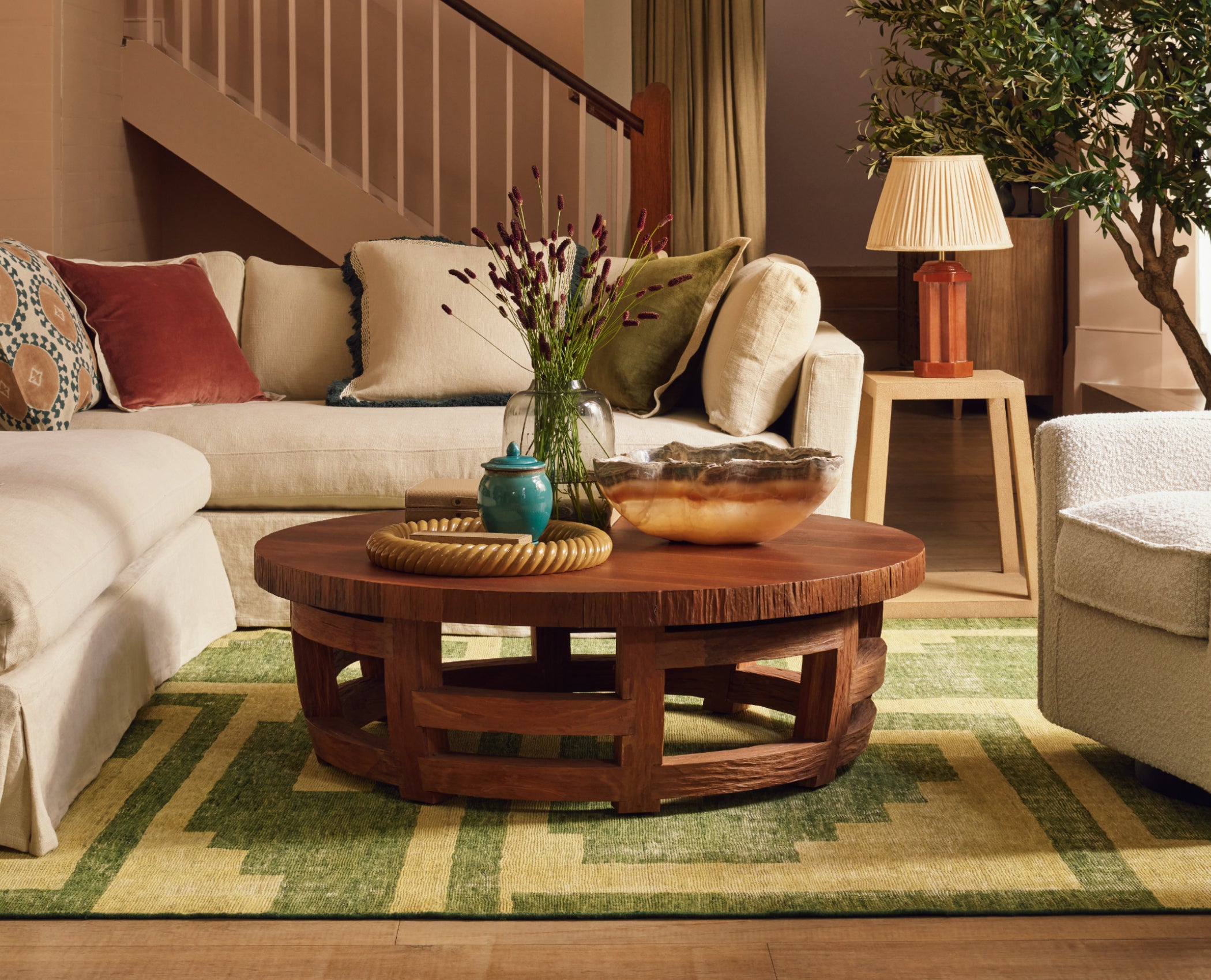



How Do I Choose a Coffee Table Size?
A coffee table can completely change the feel and functionality of a room, for better or worse. To avoid the latter, getting your measurements right is crucial. It’s all about proportions; while there is a common coffee table size, every home is unique, so measuring your existing sitting room furniture will determine the ideal length and width for your coffee table. Below, you’ll find a breakdown of coffee table height, width and depth to help you find the perfect size for your space.
Alexey Coffee Table - Weathered Oak
Handmade
£2,595.00
Coffee Table Width
The typical width for a standard coffee table is around 120cm, but they can vary anywhere between 70cm–220cm depending on the scale you’re looking for. Just as with height, the size you select should be determined by your sofa. One that is the same size or larger than your sofa will look too big, and will make your sitting room appear smaller. To keep the proportions in check, we recommend seeking a style that is two-thirds the length of your sofa. This will help your living space feel more balanced.
Coffee Table Depth
Coffee table depths can range from 50cm–80cm. However, if you’ve already read up on coffee table height and width, you’ll be unsurprised to hear that the perfect depth is also largely determined by the rest of the furniture in your sitting room. In this instance, it all hangs on placement. You’ll want to leave 30cm–45cm of space between your coffee table and your sofa, and around 75cm of space between your other pieces of furniture, such as your TV stand, to allow for comfortable foot traffic. To calculate the perfect depth, measure the distance from your sofa to your TV stand (or another large piece of furniture) and then subtract 120 (which is 45 + 75, a.k.a the distance you want to keep between your sofa and your coffee table, plus the distance between your coffee table and TV stand).
Coffee Table Height
A standard coffee table is usually between 40cm–45cm high, but the perfect height will come down to the size of your surrounding furniture. For example, a coffee table should typically be either the same height as your sofa seat cushions, or a maximum of 5cm lower, in order to allow for easy access to the coffee table surface. We’d recommend avoiding coffee tables that are higher than your sofa seat, as this is less comfortable and will make the room feel out of proportion.
“Coffee tables are a great way to bring a touch of your personality to your sitting room.”
What Shape of Coffee Table is Best?
While it’s most common to find rectangular coffee tables, there are lots of alternatives out there which offer great solutions for those with minimal space, or who simply want to opt for something a little different. If you’re wondering whether square or circular coffee tables are better, or which shape of coffee table can accommodate more people, then keep reading.
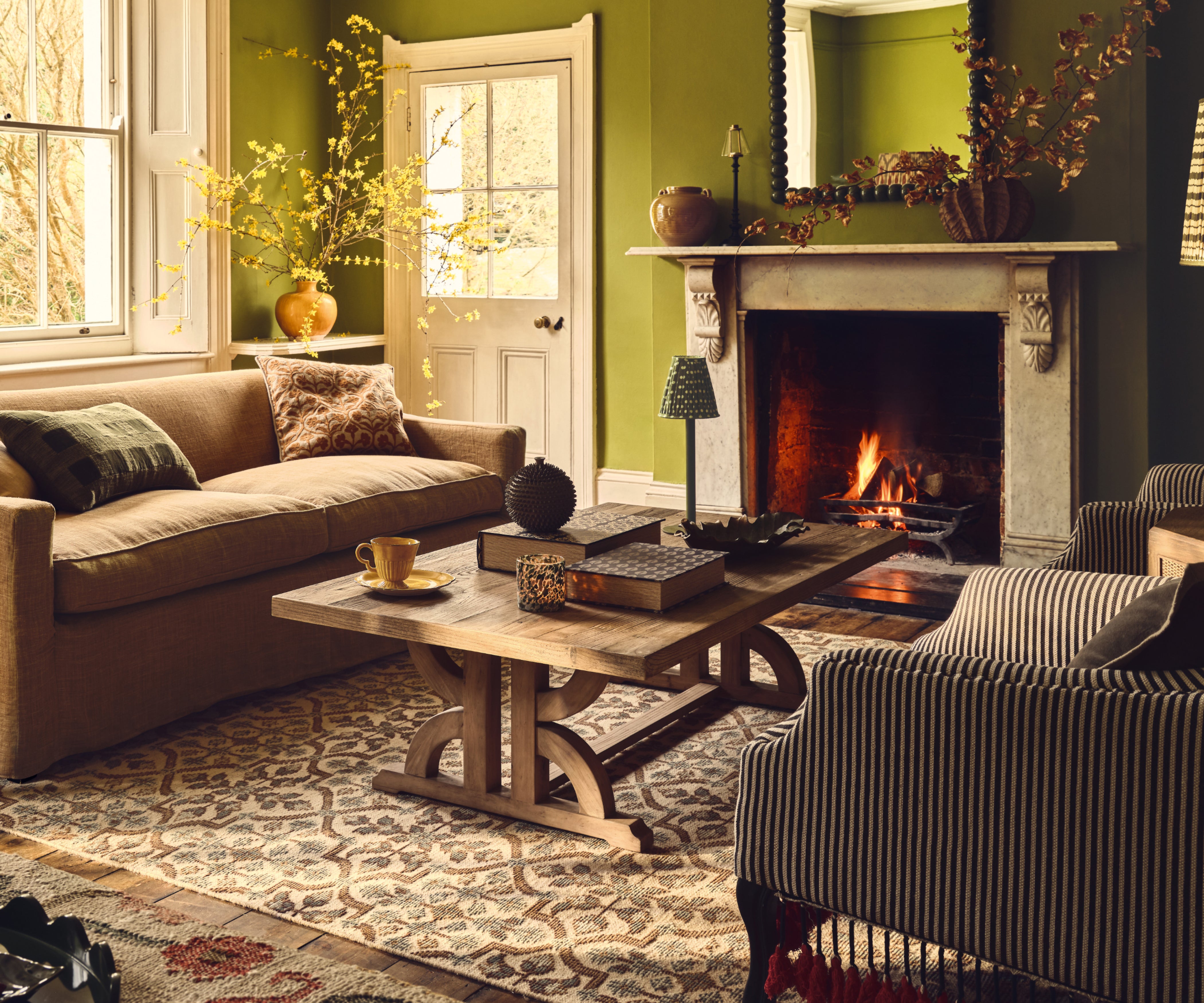
Rectangular
If this is your preferred shape, then you’re in luck, as it’s the most popular and therefore the most readily available. This is a great choice if you’ve got a particularly wide sofa or a large sitting room, as it often takes up more space than other shapes. If your living space has lots of curved lines, then why not break them up with a contrasting, angular silhouette such as this?
Round
If you have a compact living space, then this is the shape for you. We’d also recommend a round table if you have a shorter sofa or a more condensed seating arrangement, as longer sofas will make this style of coffee table appear smaller. Those with young families or pets may prefer this shape, too, as there are fewer sharp edges to contend with.
Square
Want the sleek lines of a rectangular coffee table but with the compact style of a circular shape? Allow us to introduce the square coffee table, which offers the best of both worlds. It is ideal for smaller sitting rooms, or spaces where the seating arrangement is similarly shaped. Those with long sofas may find this style tricky to reach from all angles.
Oval
Oval styles offer the soft edges of a round coffee table, but with a longer silhouette. This is a great option if you love the look of a circular shape, but need a large style to suit a particularly long sofa.
Marylebone Coffee Table - Large - Weathered Oak
Hand Finished
£2,295.00
Flavian Coffee Table - Natural
Handmade
£1,395.00
What Material is Best for a Coffee Table?
There is a large choice of materials when it comes to coffee tables, all of which have qualities that may or may not correlate with your lifestyle. Here are a few key materials, and their distinctive features, to consider.
• Wood: This is the most popular coffee table material, thanks to its durability and easily adaptable style.
• Glass: If you’re working with a smaller sitting room, then glass is a great way to create a more open and airy aesthetic. However, as a fragile material, it may not be the best for homes with young children or pets.
• Stone: The likes of marble, granite and slate look striking in coffee table form, and bring a lovely, dramatic contrast to spaces with wooden flooring or carpets in muted colours. However, as they’re prone to scratches and water marks, they require careful upkeep to maintain their sleek look; think regular cleaning and coasters to avoid cup rings.
• Metal: Metal coffee tables are extremely versatile, and are often strong and long-lasting. Be sure to choose a style created from good quality metal to guarantee longevity, such as steel, as thinner, flimsier materials such as tin won’t have the same durability.
• Plastic: For a coffee table that can be easily moved around, plastic is a great choice, as it is lightweight. These types of coffee table will also be easy to keep clean. We’d recommend these for a more minimal or modern living space.
What are the Different Types of Coffee Table?
With size, shape and material sorted, it’s time to move on to the fun part: style. Coffee tables are a great way to bring a touch of your personality to your sitting room, and with a variety of designs to choose from, you’re sure to find something that will suit your tastes. Perhaps you’ll want to follow the latest trends, are seeking storage solutions or simply want a surface on which to display your favourite objets d’art? Here are a few ideas to inspire your decision.
Storage
For those with smaller sitting rooms, coffee tables that incorporate a storage element are ideal space-saving solutions. There are a number of options to choose from; think tables with drawers, cupboards, tabletops that lift up, or simply open shelving if the pieces you’re looking to store are also worthy of display.
Trunks and Ottomans
On the theme of storage, trunks and ottomans are great coffee table alternatives. Offering storage as well as a place to sit or rest your feet, they’re the perfect hybrid pieces. Read our guide to using ottomans as coffee tables for more information.
Upholstered Coffee Tables
Striking the balance between coffee table and ottoman, upholstered designs usually feature a soft, cushioned top and a wooden base, sometimes with open shelving underneath.
Nesting Tables
If you’re looking for flexibility, nesting designs are ideal. Place them side by side for extra surface area, tuck them together to save on space or use them separately as coffee and occasional tables – the choice is yours.

Since the very beginning, we’ve been on a mission to create things that make time spent with friends and family more memorable...

Featured in this article
Interested in more inspiration?
From tips and tricks to decorating advice and expert know-how, we've got plenty of bright ideas for the home and garden.

5 November 2025
The OKA Christmas Gift Guide 2025
It can be hard to know what to buy loved ones every year, whether friends or family, especially those who...
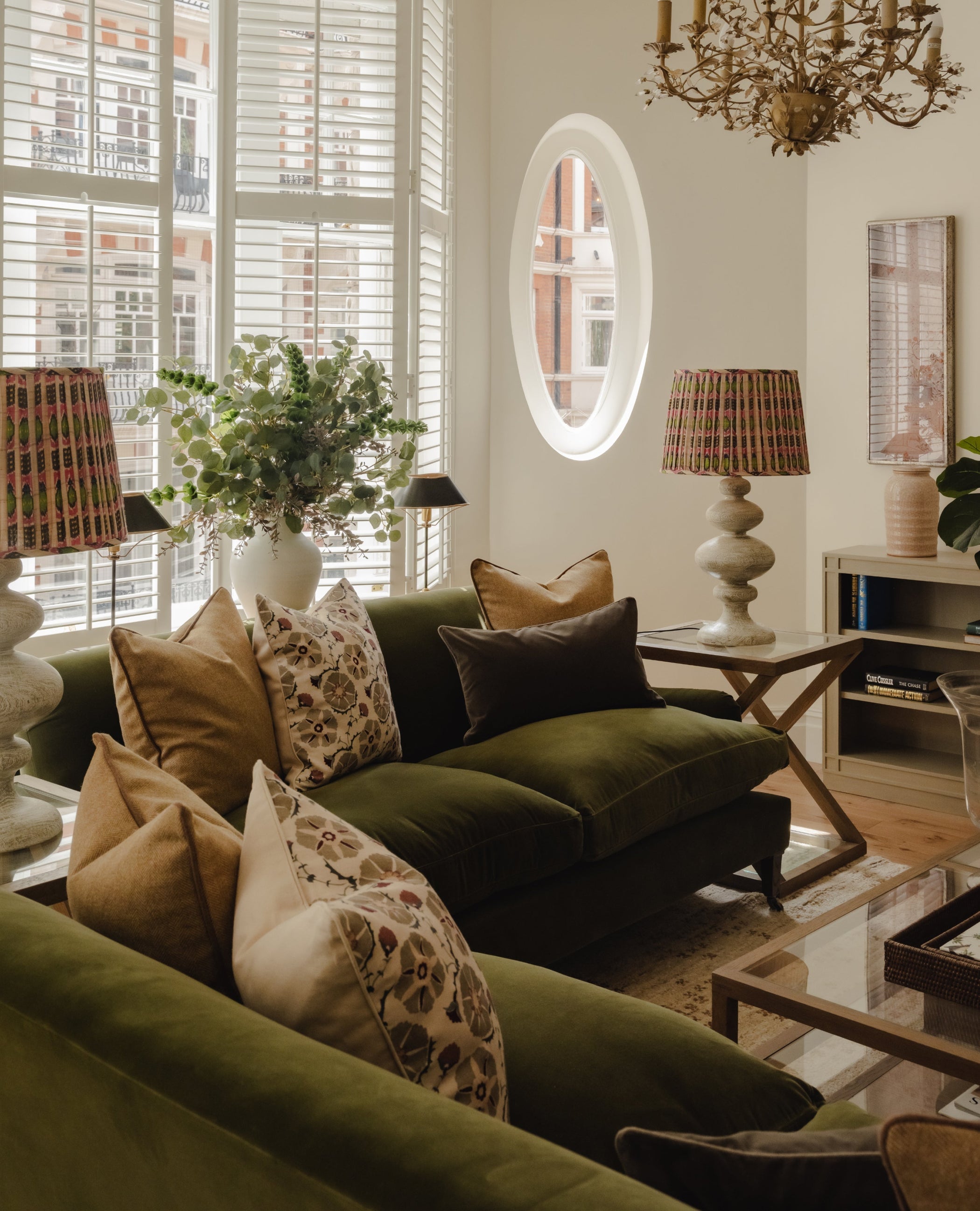
21 October 2025
A Tale of Two Apartments
Ten years after collaborating with our Interior Design Service, international client Mrs. Symth once again returned to OKA when it...

17 October 2025
How to elevate your seasonal entertaining at home
Sometimes, the smallest details can make the biggest difference, especially when it comes to welcoming friends and family over a...

10 October 2025
The Art of the Multi-Purpose Room
How to Create a Multi-Purpose Room Now, more than ever, our home needs to work as hard as we do,...
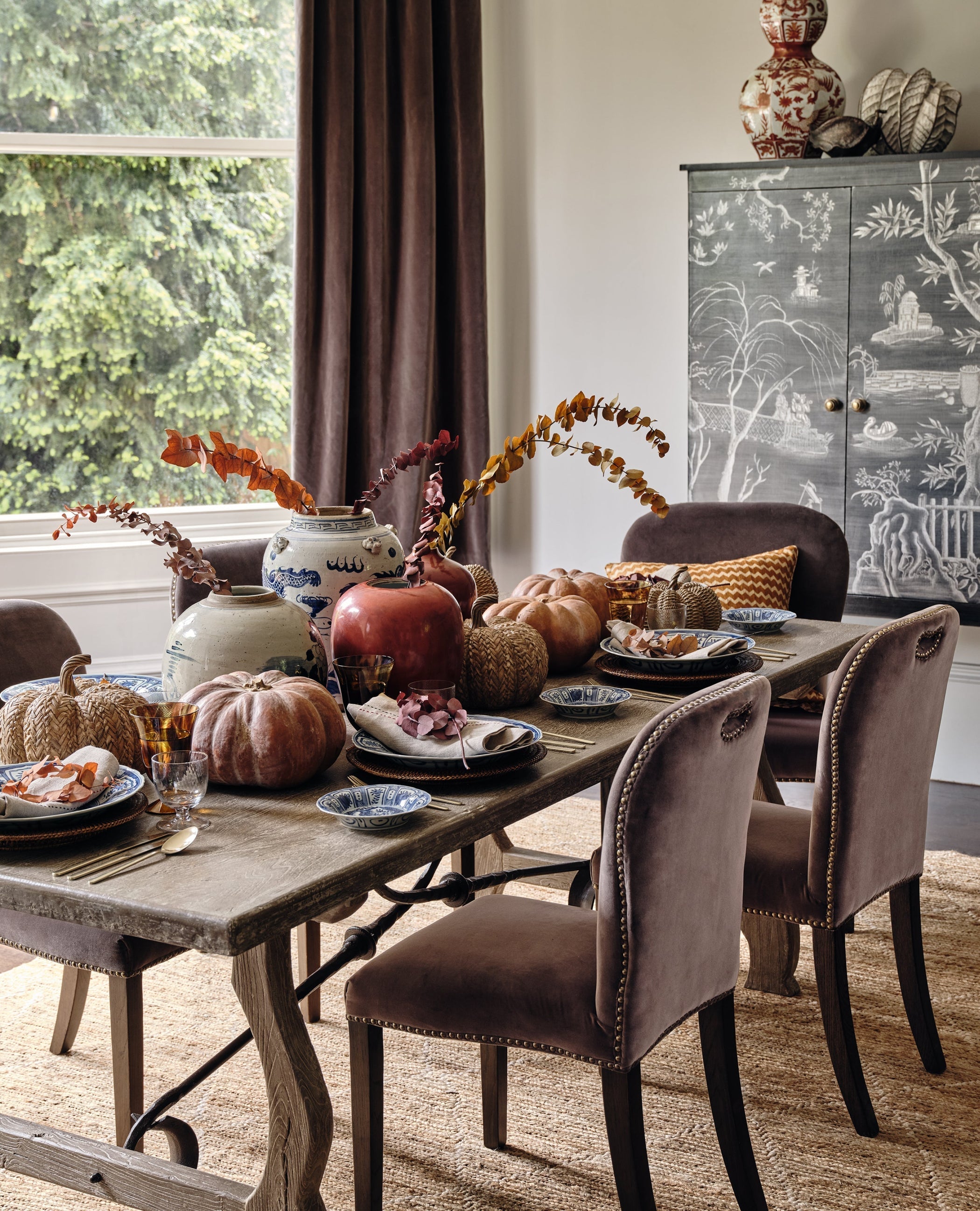
9 October 2025 | Emily Sims
How to Decorate a Table for Halloween
Get creative with your table decorations for Halloween, using the seasonal colours of orange, purple and green.

6 October 2025
How to bring nature into your home during winter
It’s easy to surround yourself with nature in the summer, when you can get out into the garden, entertain al fresco...

6 October 2025 | Ellen Millard
How to Use Lighting to Create a Cosy Home
Interior Designers Sophie Stevens and Lisa Mitchell share their tips for achieving a warm and inviting glow.
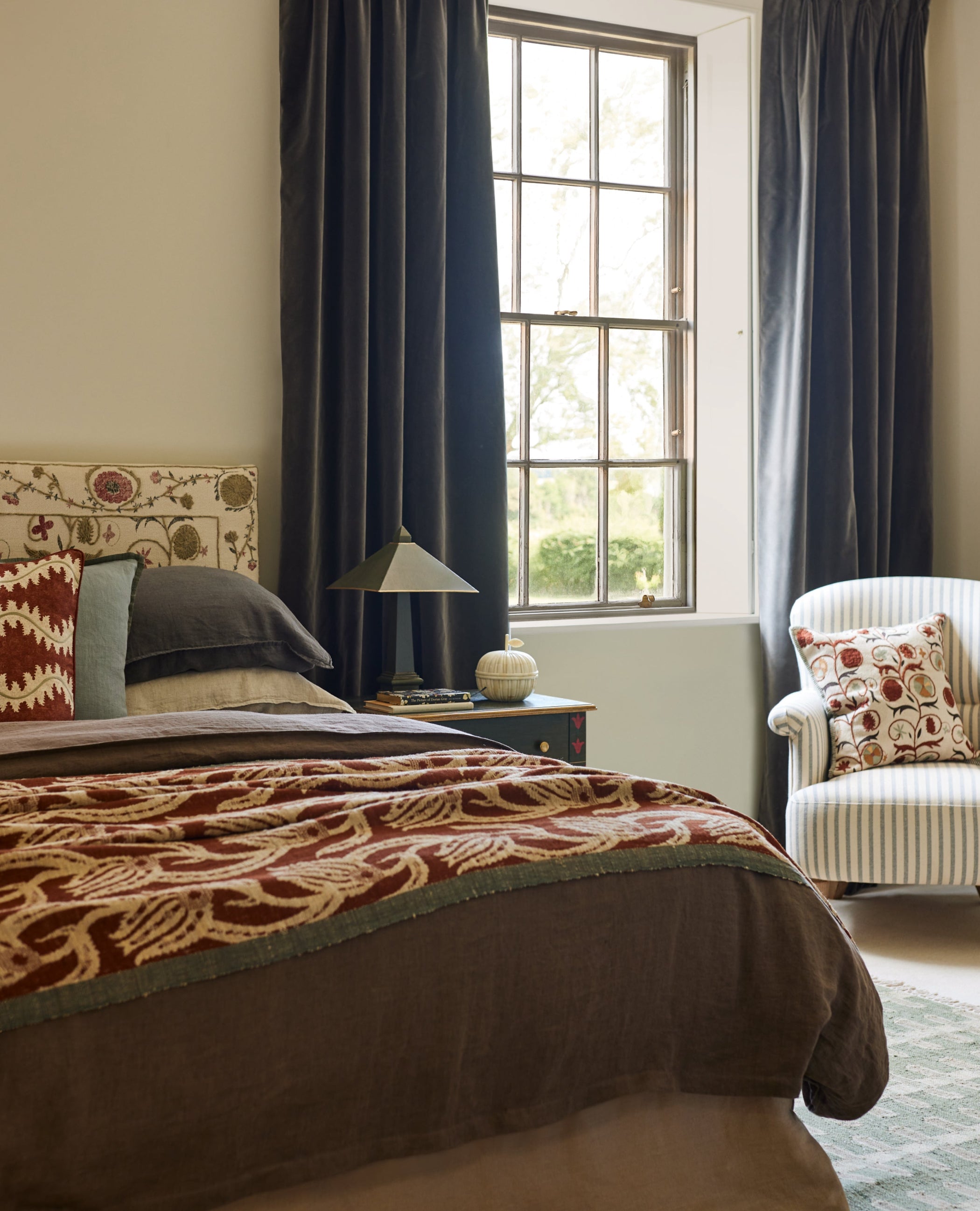
16 September 2025
How to Create a Bedroom for Hibernating at Home
Autumn is upon us, and with it a chance to take stock and rest up in a bedroom that’s as...

2 September 2025
A Seasonal Shift: AW25
Cooler days and darker nights call for indulging in home comforts, whether that’s curling up on a comfortable sofa or...

22 July 2025
Binky Felstead x OKA: Transforming Her London Home
Be the first to step inside the stylish London townhouse of Binky Felstead – TV personality, entrepreneur and influencer – who collaborated with our Interior Design Service to create a comfortable home for her evolving family.
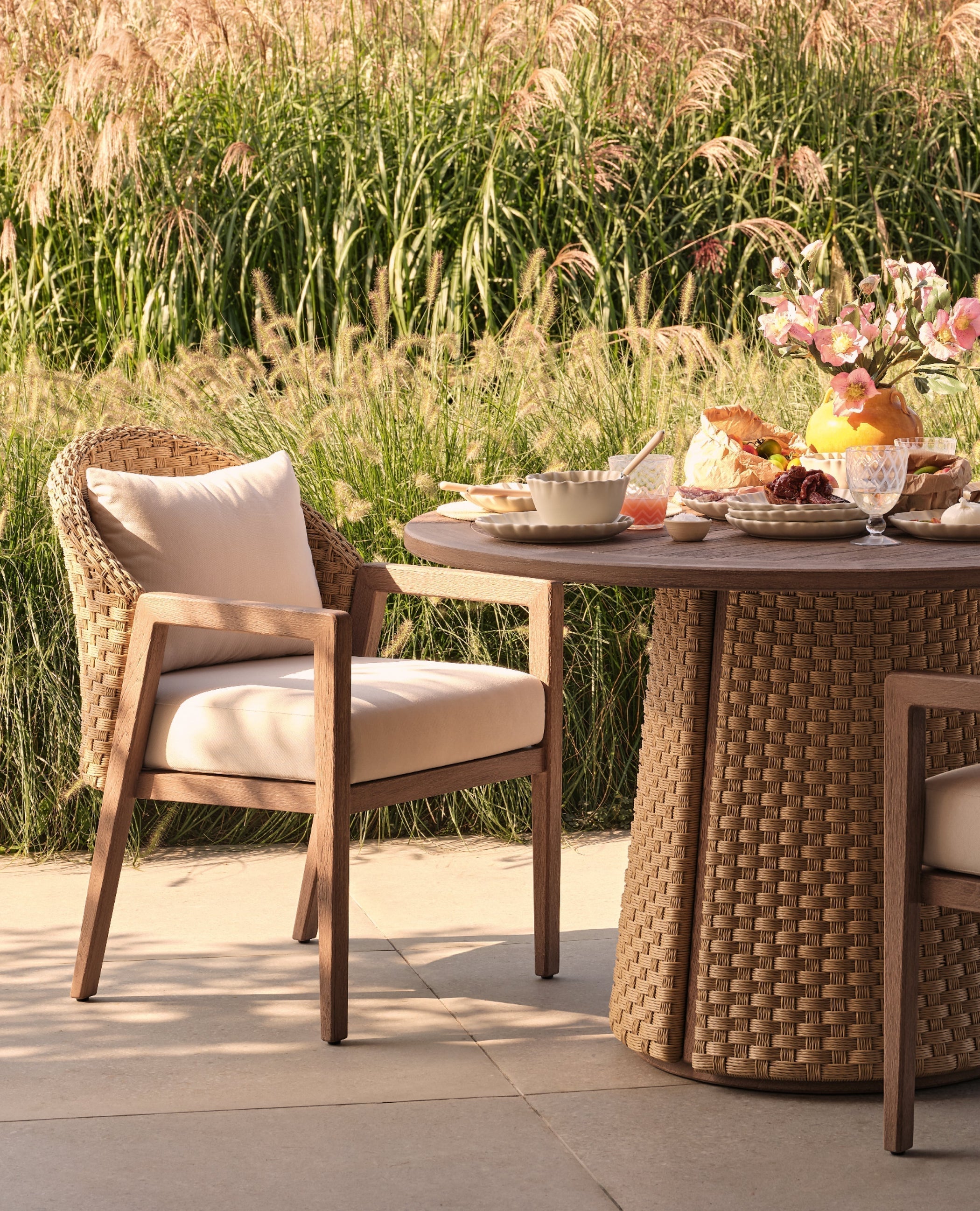
9 July 2025 | OKA Correspondent
Outdoor Entertaining: How to Style Your Garden for Summer Parties
Throwing open the doors to entertain in the garden is one of the most joyful things about summer, whether simply...

23 June 2025 | OKA Correspondent
Sofa Buying Guide – What To Look For In a Sofa
Not sure what type of sofa to buy? Our guide is here with all the information you need, from measuring up to choosing a style and colour.

22 May 2025 | Ellen Millard
Our Guide to Visiting Chelsea for the 2025 Flower Show
Everything you need to know ahead of the RHS Chelsea Flower Show 2024, from dress codes to dining destinations.

16 May 2025 | OKA Correspondent
Expert Tips for Arranging Faux Flowers
From solo stems to bountiful bouquets, there’s nothing like a bunch of flowers to lift the look and feel of...

14 May 2025 | Ellen Millard
How to Decorate Your Garden for the Summer
From the perfect outdoor accessories to ambient lighting ideas, these tips and tricks will help you get your garden set for the long weekend.

13 May 2025 | Ellen Millard
How to Arrange Cushions for Sofas and Beds
If arranging cushions gets you all in a fluster, just follow these six simple tips from our Interior Design team.

13 May 2025 | OKA Correspondent
Stylish Outdoor Dining Ideas for Al Fresco Feasting
Sunshine is on its way, and with it comes plentiful opportunities to soak up its glorious rays. When the weather...

13 May 2025 | OKA Correspondent
Buying Guide for Armchairs
Armchairs combine comfort and style. With so many different styles, how do you find the best option for your needs? Read our guide to find out.

13 May 2025 | OKA Correspondent
How to Create Your Dream Home office
Out of office but working from home? Follow these inspired design ideas to achieve that much-coveted work-life balance.
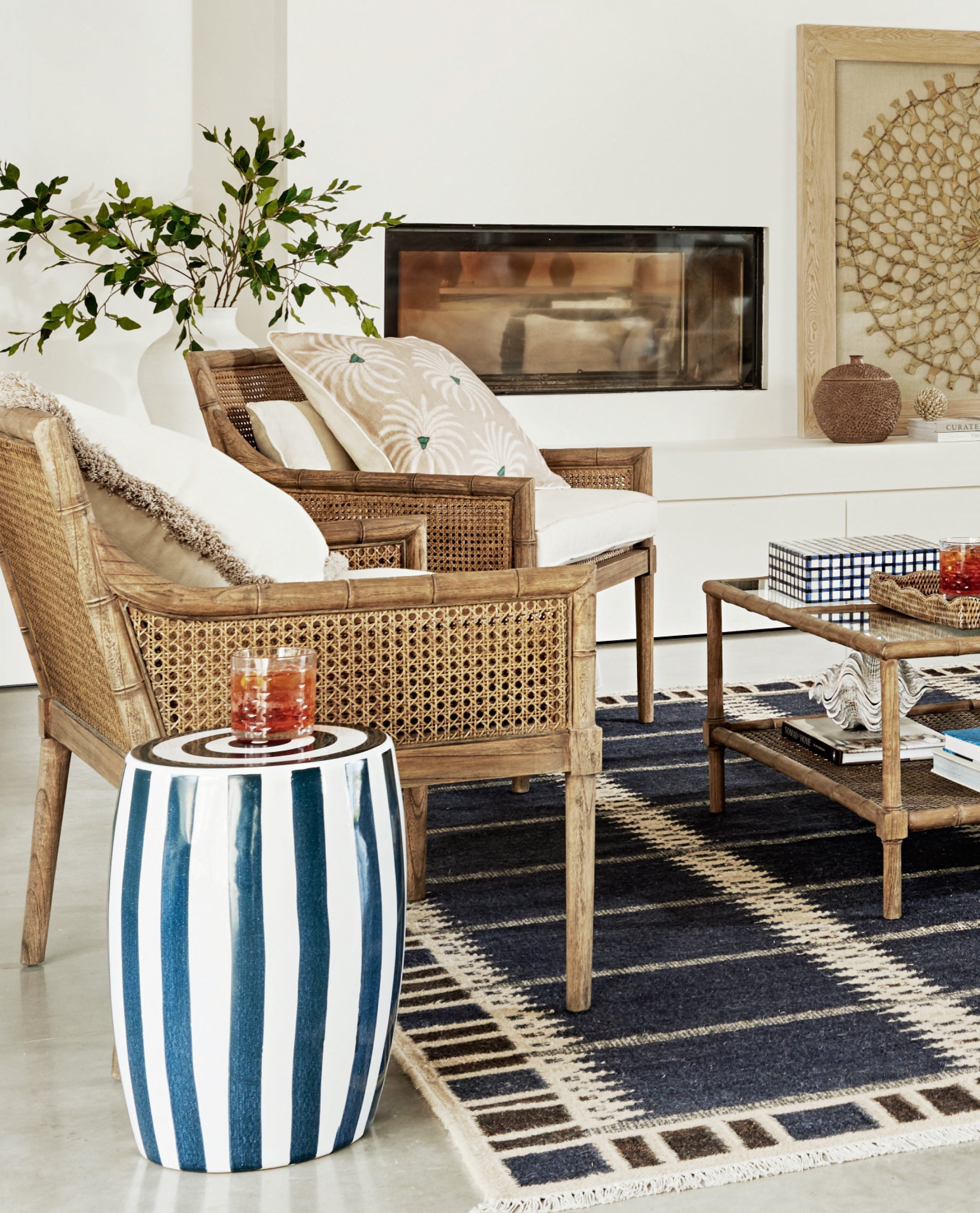
13 May 2025 | Emily Sims
Get the Mediterranean Summer Look
Enjoy the holiday feeling at home by bringing the bright and breezy aesthetic of the Mediterranean to your interiors.


